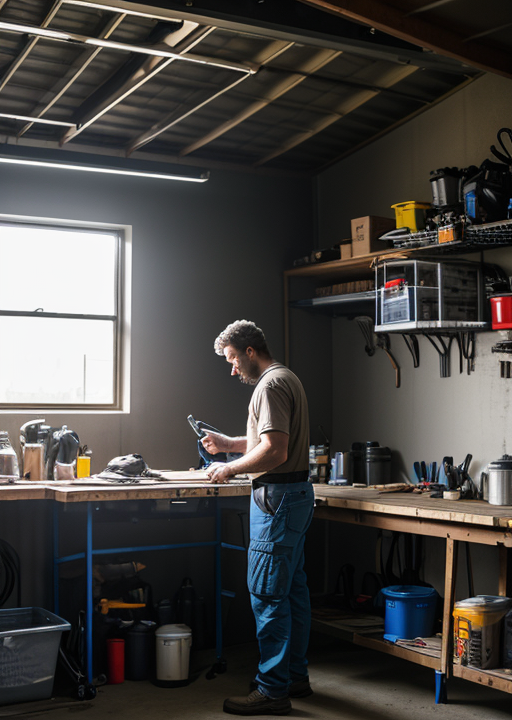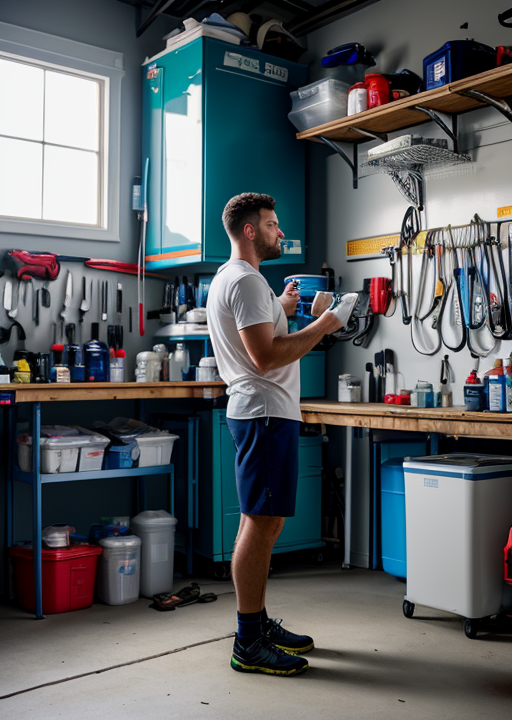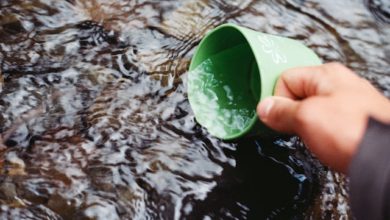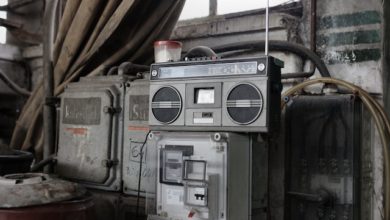
The Ultimate Earthquake Survival Checklist: How to Prepare for the Unexpected
In a world full of uncertainty, being prepared is the key to surviving any unexpected disaster. When it comes to earthquakes, having a well-stocked survival kit and a solid emergency plan can make all the difference. That’s why we’ve created the ultimate earthquake survival checklist to help you prepare for the unexpected.
Whether you live in a high-risk earthquake zone or just want to be ready for any situation, our checklist covers all the essentials you’ll need to weather the storm. From securing heavy furniture to creating a communication plan with your loved ones, every step is thoughtfully included.
Understanding Earthquakes
Earthquakes are a natural phenomenon that occurs when there is a sudden release of energy in the Earth’s crust. This energy creates seismic waves that can cause the ground to shake violently, resulting in widespread damage and destruction. Understanding the science behind earthquakes is crucial in preparing for and surviving these unpredictable events.
It’s important to know that earthquakes can happen anywhere in the world, although some regions are more prone to seismic activity than others. The severity of an earthquake is measured on the Richter scale, which quantifies the amount of energy released during an earthquake. The higher the magnitude, the stronger the earthquake and the more potential for damage.
To better understand earthquakes, it’s essential to know the different types. The most common type is a tectonic earthquake, which occurs when there is a release of stress along a fault line. Other types include volcanic earthquakes, caused by volcanic activity, and collapse earthquakes, which happen when underground caves or mines collapse.
By familiarizing yourself with the basics of earthquakes, you’ll be better equipped to prepare for and respond to these natural disasters. Knowledge is power, especially when it comes to safeguarding yourself and your loved ones.
The Importance of Earthquake Preparedness
When it comes to earthquakes, preparedness can mean the difference between life and death. Being proactive and having a solid emergency plan in place can significantly increase your chances of survival and minimize the impact on your life. Here’s why earthquake preparedness is crucial:
- Safety: By preparing in advance, you can identify potential hazards in your home or workplace and take steps to mitigate them. This includes securing heavy furniture, anchoring bookshelves, and fastening water heaters to prevent them from tipping over during an earthquake. Taking these precautions can help protect yourself and others from injuries caused by falling objects.
- Communication: During an earthquake, communication is vital. Having a communication plan with your loved ones can help alleviate anxiety and ensure everyone’s safety. Determine a designated meeting place outside your home in case you’re separated during the earthquake. Also, establish a contact person outside the affected area who can act as a central point of communication for your family or friends.
- Essential Supplies: In the aftermath of an earthquake, access to basic necessities like food, water, and medical supplies can be limited. By having an earthquake survival kit ready, you’ll have the essentials to sustain yourself and your family until help arrives. Your survival kit should include non-perishable food, water, a first aid kit, flashlights, batteries, a portable radio, and any necessary medications.
Preparing for an earthquake may take time and effort, but the peace of mind and the potential to save lives are well worth it. Don’t wait until it’s too late – start your earthquake preparedness journey today.
Creating an Earthquake Survival Plan

When it comes to surviving an earthquake, having a well-thought-out plan is crucial. Here are the steps to creating an effective earthquake survival plan:
- Assess your risk: Start by understanding the level of earthquake risk in your area. Research local geological reports and maps to determine if you live in a high-risk zone. This information will help you gauge the potential severity of an earthquake and plan accordingly.
- Identify safe spaces: Identify the safest areas in your home or workplace where you can take cover during an earthquake. These spaces should be away from windows, heavy furniture, and objects that can fall. Practice taking cover in these areas to familiarize yourself with the process.
- Establish communication: Establish a communication plan with your loved ones. Determine how you will contact each other during and after an earthquake. Designate a contact person outside the affected area who can relay messages and help coordinate your response.
- Educate yourself: Educate yourself and your family members on what to do during an earthquake. Teach everyone to “Drop, Cover, and Hold On” – drop to the ground, take cover under a sturdy piece of furniture, and hold on until the shaking stops. This simple technique can significantly reduce the risk of injury.
- Practice drills: Regularly practice earthquake drills with your family to ensure everyone knows what to do when an earthquake strikes. Conducting drills will help build muscle memory and increase the chances of a quick and efficient response during a real earthquake.
Remember, an earthquake can strike at any time, so being prepared is crucial. By creating an earthquake survival plan, you’re taking proactive steps to protect yourself and your loved ones.
Essential items for your Earthquake Survival Kit
Having an earthquake survival kit ready is essential for weathering the aftermath of a seismic event. Your survival kit should contain all the necessary items to sustain yourself and your family until help arrives. Here are the essential items to include:
- Non-perishable food: Stock up on canned goods, protein bars, nuts, and dried fruits. Choose items with a long shelf life and consider any dietary restrictions or allergies.
- Water: Store at least one gallon of water per person per day for at least three days. Remember to replace the water every six months to ensure it remains fresh.
- First aid kit: Include a well-stocked first aid kit that includes bandages, antiseptics, pain relievers, and any necessary prescription medications.
- Flashlights and batteries: Have multiple flashlights with extra batteries to provide light during power outages.
- Portable radio: Include a battery-operated or hand crank radio to stay updated on emergency broadcasts and advisories.
- Emergency blankets: Pack thermal blankets to provide warmth in case of extended power outages or exposure to the elements.
- Personal hygiene items: Include toiletries, toilet paper, hand sanitizer, and wet wipes for sanitation purposes.
- Cash: Keep a small amount of cash on hand in case ATMs and credit card machines are not functioning.
- Tools and supplies: Include a wrench, pliers, and a multi-tool for basic repairs and utility shut-offs.
- Important documents: Keep copies of identification documents, insurance policies, and medical records in a waterproof bag.
Remember to periodically check and replenish your earthquake survival kit. Keep it in an easily accessible location and ensure everyone in your household knows where it is located. Being prepared with an adequate supply of essential items can make a significant difference in the aftermath of an earthquake.
Securing Your Home for Earthquakes
Securing your home for earthquakes is an essential step in minimizing damage and protecting yourself and your loved ones. Here are some measures you can take to secure your home:
- Anchor heavy furniture: Secure heavy furniture, such as bookshelves and cabinets, to the wall using brackets, straps, or L-shaped brackets. This will prevent them from tipping over during an earthquake.
- Secure appliances: Strap down major appliances, such as refrigerators, water heaters, and televisions, to prevent them from falling or causing injuries.
- Install safety latches: Use safety latches on cabinets to prevent items from falling out and causing injuries during an earthquake.
- Secure light fixtures: Make sure light fixtures are securely attached to the ceiling, using safety cables if necessary.
- Secure artwork and mirrors: Hang artwork and mirrors with earthquake-resistant hooks, and avoid placing heavy items above beds or seating areas.
- Organize and secure shelves: Arrange items on shelves in a way that prevents them from falling during an earthquake. Use non-slip shelf liners to keep items in place.
By taking these simple steps, you can significantly reduce the risk of injury and damage to your home during an earthquake. Remember, securing your home is an ongoing process, so regularly inspect and maintain the safety measures you’ve implemented.
Emergency Communication During Earthquakes
During an earthquake, communication is vital for ensuring the safety of your loved ones. Establishing a communication plan in advance will help you stay connected and informed. Here are some communication strategies to consider:
- Designate a contact person: Choose a contact person outside the affected area who can act as a central point of communication for your family or friends. Make sure everyone in your network has their contact information.
- Agree on a meeting place: Determine a designated meeting place outside your home or building in case you’re separated during an earthquake. Choose a location that is easily accessible and unlikely to be affected by the earthquake.
- Use text messaging: During an earthquake, text messages are often more reliable than phone calls. Text messages require less bandwidth and can often get through even when cellular networks are congested.
- Utilize social media: Social media platforms can be used to provide updates on your safety and well-being. Check-in with your loved ones through platforms like Facebook, Twitter, or WhatsApp.
- Emergency radio broadcasts: Keep a battery-operated or hand-crank radio in your survival kit to stay updated on emergency broadcasts and advisories. Local radio stations often provide critical information during and after an earthquake.
Remember to practice your communication plan regularly to ensure everyone knows what to do in case of an earthquake. By establishing effective communication channels, you’ll be able to stay connected and informed during a crisis.
Evacuation Procedures and Safe Locations
In some cases, evacuating your home or workplace may be necessary during an earthquake. Knowing when and how to evacuate is crucial for your safety. Here are some key considerations:
- Identify safe evacuation routes: Research and identify safe evacuation routes in your area. Familiarize yourself with the directions and landmarks along the way to ensure a smooth evacuation.
- Follow official instructions: Stay updated on official instructions and advisories from local authorities. They will provide guidance on when to evacuate and where to seek shelter.
- Evacuate tall buildings: If you’re in a tall building during an earthquake, it’s generally safer to evacuate rather than stay inside. Use the stairs instead of elevators and follow the designated evacuation routes.
- Seek open spaces: If you’re outdoors during an earthquake, move to an open area away from buildings, streetlights, and utility wires. Falling debris and objects pose significant risks during an earthquake.
- Follow emergency shelters: If local authorities designate emergency shelters, follow their instructions and proceed to the nearest shelter. These shelters are equipped to provide temporary accommodation and essential supplies during a crisis.
Always prioritize your safety and follow the instructions of local authorities during an evacuation. If you’re unsure about the safety of your location or the need to evacuate, it’s better to err on the side of caution.
First Aid and Medical Supplies for Earthquake Emergencies
In the aftermath of an earthquake, access to medical care may be limited, making it essential to have a well-stocked first aid kit and necessary medical supplies. Here are some items to include:
- Bandages and dressings: Stock up on various sizes of adhesive bandages, sterile gauze pads, and adhesive tape for treating wounds and injuries.
- Antiseptics and ointments: Include antiseptic wipes, hydrogen peroxide, and antibiotic ointments to clean and treat wounds.
- Pain relievers: Have over-the-counter pain relievers like acetaminophen or ibuprofen to help alleviate pain and discomfort.
- Prescription medications: If you or your family members require prescription medications, make sure to have a sufficient supply on hand. Rotate medications regularly to ensure they do not expire.
- Emergency medications: Consider including emergency medications like antihistamines, asthma inhalers, and emergency epinephrine auto-injectors, if necessary.
- Medical equipment: If you or your family members require specific medical equipment, such as insulin supplies or hearing aids, make sure to include them in your emergency kit.
- Emergency contact information: Keep a list of emergency contact numbers, including your healthcare providers and insurance information.
Remember to periodically check your first aid kit for expired items and replace them as needed. Additionally, consider taking a first aid and CPR course to enhance your emergency response skills.
Earthquake Drills and Practice Exercises
Practice makes perfect, and when it comes to earthquake preparedness, drills and practice exercises are essential. Regularly conducting earthquake drills will help ensure a quick and efficient response during a real earthquake. Here are some tips for organizing and implementing effective drills:
- Establish a schedule: Set a schedule for conducting regular earthquake drills. Aim for at least once every six months, or more frequently if you live in a high-risk earthquake zone.
- Communicate the drill: Inform everyone in your household or workplace about the upcoming drill. Explain the purpose of the drill and what actions they should take.
- Simulate realistic scenarios: Create scenarios that mimic real earthquake situations. For example, simulate power outages, blocked exits, or injuries. This will help participants practice their response to different situations.
- Practice “Drop, Cover, and Hold On”: During the drill, instruct everyone to drop to the ground, take cover under a sturdy piece of furniture, and hold on until the shaking stops. Emphasize the importance of staying in place until the shaking subsides.
- Evaluate and debrief: After the drill, evaluate the effectiveness of the response and identify areas for improvement. Conduct a debriefing session to discuss what worked well and what could be improved.

Remember, earthquake drills are not just for households but also for schools, businesses, and other organizations. By practicing regularly, you’ll be better
Conclusion: Being Prepared for Earthquakes Can Save Lives
Being prepared for earthquakes can save lives. By following the steps outlined in this ultimate earthquake survival checklist, you can ensure that you and your loved ones are well-equipped to handle the unexpected. From creating an emergency plan to building a survival kit and securing your home, every action you take brings you closer to safety.
Remember, earthquakes can strike at any time, so it’s essential to be proactive and prepared. Take the time to go through the checklist, gather the necessary supplies, and educate yourself and others. By doing so, you’ll have peace of mind knowing that you’re ready to face whatever challenges come your way.
Don’t wait for an earthquake to happen – start preparing today. Your safety and the safety of your loved ones depend on it. Stay vigilant, stay prepared, and stay safe.




